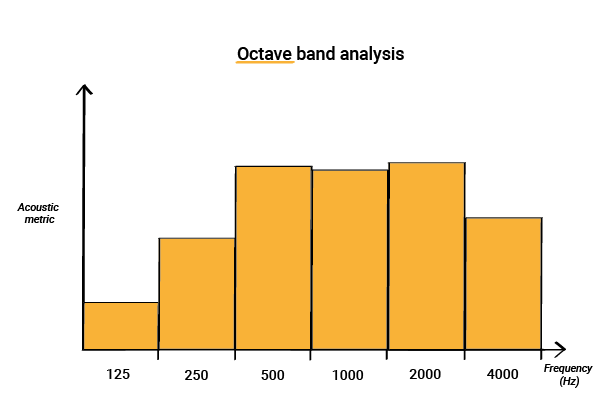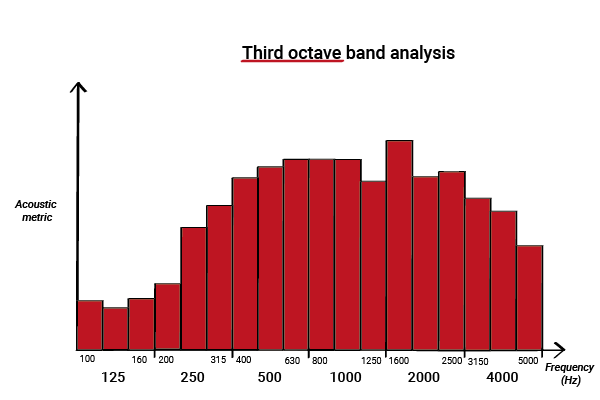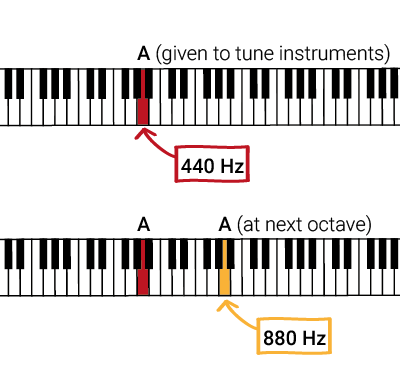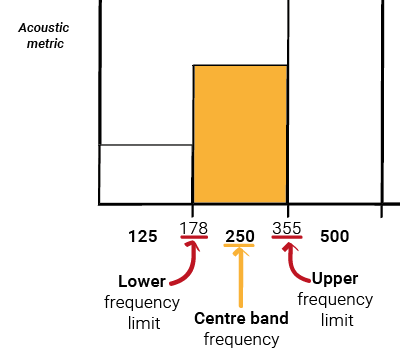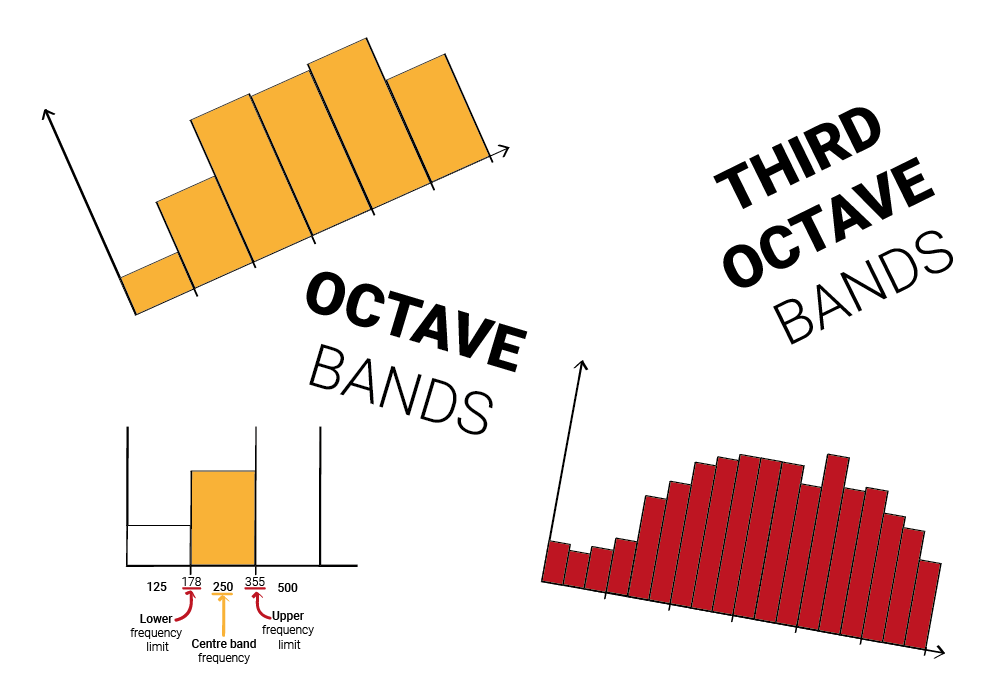
In fundamental concepts of sound, we covered some basic concepts like wavelengths and frequencies.
Acoustic experts often use frequency bands in their studies.
For non-experts, understanding concepts like third-octave and octave frequency bands can be tricky.
If you find this concept challenging, worry not! Atelier Crescendo has crafted this post just for you.
Enjoy the read!
(See at the end the references used to confirm the concepts)

Do you want to be notified when new posts are published?
Why don’t you subscribe to Atelier Crescendo’s newsletter by clicking here?
Acoustic Analysis
Studying the acoustic performance of materials or the acoustic characteristics of sources/signals comes in different ways.
Frequently, acoustic experts use frequency bands for measurements or calculations.
Essentially, it is a method to reveal acoustic information across different frequency ranges.
Most commonly, frequency analysis occurs in:
- octave bands
- third-octave bands
In third-octave bands, the precision/resolution is about three times higher than in octave bands.
The formula to obtain octave band values from third octave values depends on the acoustic metric you want to study.
What is an octave ?
An octave is an (key musical) interval, corresponding to doubling or halving frequency.
Note
From 125 Hz to 250 Hz is an octave, as is 20,000 Hz to 10,000 Hz. Text Text
Upper & higher frequency band limits and band centre frequency
When talking about bands, we must set their upper and lower frequency limits.
Also, in each band, there is a center, known as the band center frequency. It is the mean of the upper and lower limits.
Setting limits for third-octave bands is a little more complex.
Preferred (and standardised) frequency bands
Frequency band analysis has even been standardised.
International Standards Organisations have agreed on preferred frequency bands for the analysis of sound or vibrations.
Typically, in acoustic building projects, the frequency range under consideration spans from 63 Hz to 8000 Hz.
In the case of vibrations, exploration can extend to frequencies as low as 2 Hz.
Note
If you want to know about the standards, here they are:
- ANSI/ASA S1.6 (2020) – Preferred Frequencies And Filter Band Center Frequencies For Acoustical Measurements
- ANSI/ASA 51.11 (2004) – Octave-Band And Fractional-Octave-Band Analog And Digital Filters
- IEC 61260 -1 (2014) – Electroacoustics – Octave-band and fractional-octave-band filters – Part 1: Specifications
- TS0 266 (1997) – Acoustics – Preferred frequencies
Acoustic references
See below the references used to confirm the above concepts:
- Noise Control in Building Services – Sound Research Laboratories Ltd – Pergamon Press
- Sound Materials, A Compendium of Sound Absorbing Materials for Architecture and Design – Tyler Adams – Frame Publishers
- Acoustic Absorbers and Diffusers – Theory, Design and Application – Third Edition – Trevor Cox, Peter D’Antonio
- Engineering Noise Control – Sixth Edition – CRC Press – David A. Bies, Colin H. Hansen, Carl Q. Howard, Kristy L. Hansen

